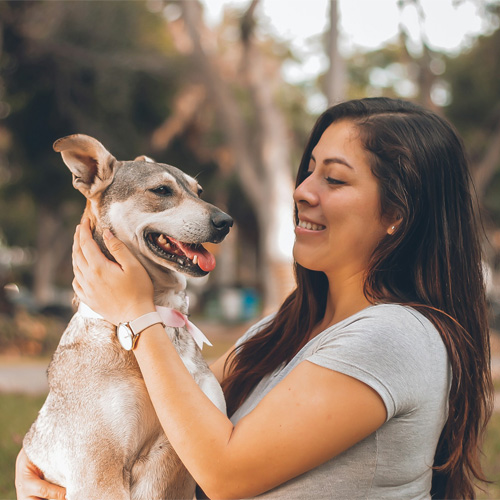ACL & Laparoscopic Surgery at Frey Pet Hospital
At Frey Pet Hospital, we offer advanced surgical solutions for orthopedic and internal procedures that prioritize your pet’s safety, comfort, and recovery. From cutting-edge ACL repair options like the TTA (Tibial Tuberosity Advancement) to minimally invasive laparoscopic surgeries, we proudly provide Cedar Rapids pets with trusted care and modern techniques.
Trusted Surgical Solutions When Your Pet Needs Relief
Expert Orthopedic & Minimally Invasive Surgery for Your Pet
ACL injuries — technically known as cranial cruciate ligament (CCL) tears — are one of the most common orthopedic conditions in dogs, especially in active or large-breed pets. If left untreated, they can lead to arthritis and long-term mobility issues.
We offer Tibial Tuberosity Advancement (TTA) surgery, a modern solution that helps stabilize the knee, restore function, and reduce pain. Most dogs recover well and regain full activity with proper post-surgical care.
Benefits of TTA Surgery:
- Shorter recovery time than traditional methods (8–12 weeks typical recovery)
- Improved long-term joint stability
- Less risk of arthritis and re-injury
On rare occasions, Dr. Steen may refer your pet to Iowa State University for a TPLO if another procedure is better suited. Please click here for a comparison between the TTA and TPLO procedures.


Laparoscopic Surgery: Less Invasive, More Comfortable
Laparoscopic procedures use a tiny camera and specialized instruments inserted through small incisions. This allows us to perform surgeries with less trauma to the body, meaning pets experience less pain and recover faster.
We commonly use laparoscopy for:
- Spays (especially in large breed dogs)
- Organ biopsies
- Abdominal exploration
- Retained testicle removal
Benefits of Laparoscopic Surgery:
- Reduced pain and swelling
- Faster recovery time
- Smaller surgical scars
- Lower risk of infection
Most pets go home the same day and resume normal activity quickly. This approach also results in less bruising and fewer complications.
Why Choose Frey Pet Hospital for Surgery?
Check out our recovery app for more information about what you can expect at your pet’s surgery appointment.
Our surgical suite is equipped with advanced technology, and all procedures are performed by a skilled veterinary team with extensive experience in orthopedic and laparoscopic techniques.
Every surgery includes:
- Comprehensive pre-surgical bloodwork
- Full anesthesia monitoring
- Tailored pain management
- Detailed post-operative care and home instructions
We treat your pet like family — from the first consultation to post-surgery follow-up.

TTA vs. TPLO: Understanding Your Dog’s Knee Surgery Options
Both TTA (Tibial Tuberosity Advancement) and TPLO (Tibial Plateau Leveling Osteotomy) are advanced surgical techniques used to repair a torn cranial cruciate ligament (CCL), a common injury in dogs. Each procedure helps stabilize the knee joint and restore your pet’s mobility.
Key Differences Between TTA & TPLO
| Feature | TTA | TPLO |
|---|---|---|
| How it works | Advances the tibial tuberosity to change knee mechanics | Rotates the tibial plateau to reduce joint shear force |
| Bone changes | Straight cut along the front of the tibia | Curved cut through the top of the tibia |
| Stabilization | Metal plate and screws | Metal plate and screws |
| Goal | Neutralize forces in the knee without needing the ligament | Allow stable movement without the ligament |
Which Surgery is Right for Your Pet?
There’s no one-size-fits-all solution. Both TTA and TPLO are safe, effective procedures with excellent success rates. The best choice depends on:
-
Your dog’s size, weight, and activity level
-
Bone anatomy and knee structure
-
Presence of arthritis or other orthopedic concerns
-
Your veterinarian’s recommendation
Dr. Steen typically recommends TTA for most patients, as it offers a quicker bounce-back and strong long-term results. For the small percentage of dogs better suited to TPLO, we’ll help you explore that option through a trusted referral.


Recovery & Outcomes
Recovery from either procedure usually includes:
-
8–12 weeks of restricted activity
-
Pain management and anti-inflammatory medications
-
Gradual reintroduction of exercise
-
Physical rehabilitation (if recommended)
With proper post-op care, most dogs return to full activity and enjoy lasting relief from pain and instability.
Can You Help Me Choose Between TTA and TPLO?
Yes! Our veterinary team will evaluate your dog’s specific needs, review X-rays, and discuss the pros and cons of each option with you. We’re here to guide you in making an informed, confident decision for your pet’s health.
In general, Dr. Steen prefers the TTA procedure, as pets often bounce back a little quicker. Fortunately, over 90% of patients are good candidates for TTA. For the few that aren’t, Dr. Steen will be happy to help guide you to a good alternative.
